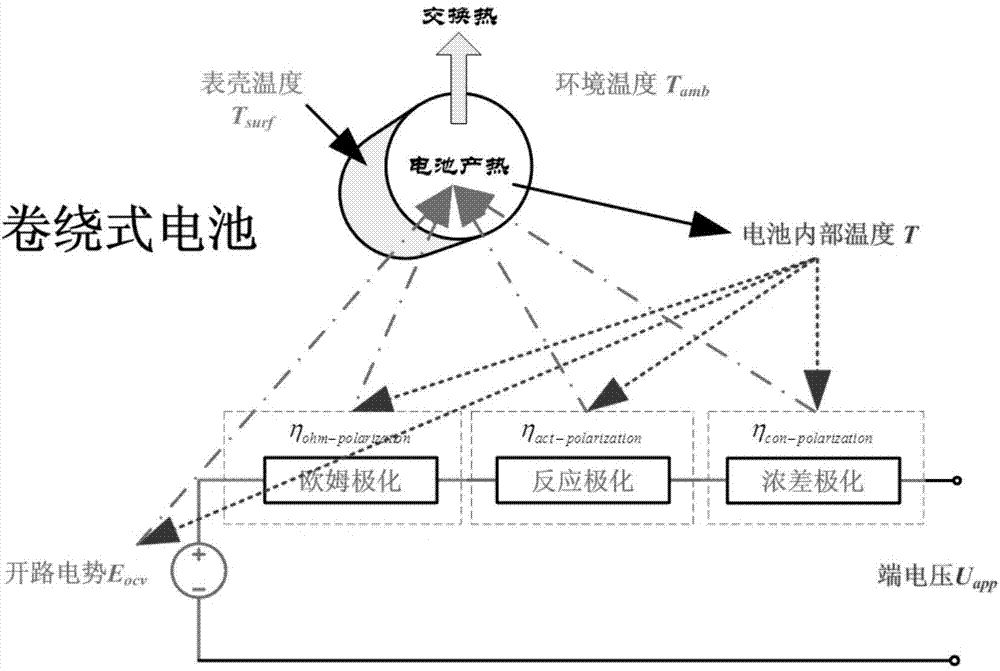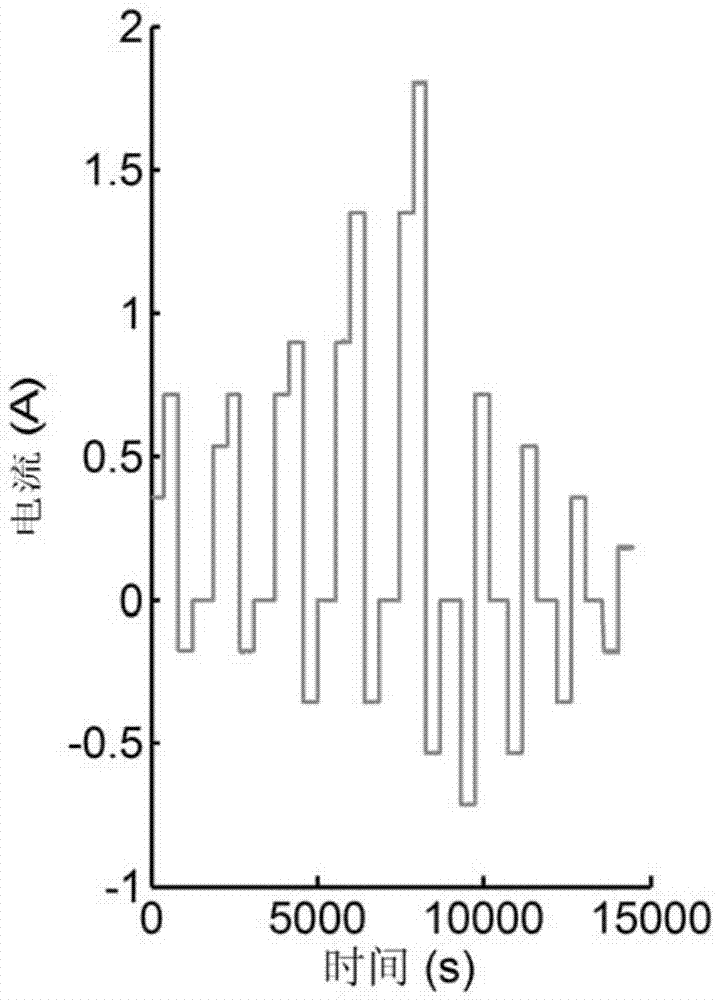Method for obtaining electrochemical and thermal coupling models of lithium ion battery
A lithium-ion battery, a technology for obtaining a method, applied in the field of large-capacity energy storage in a smart grid
- Summary
- Abstract
- Description
- Claims
- Application Information
AI Technical Summary
Problems solved by technology
Method used
Image
Examples
specific Embodiment approach 1
[0037] Specific implementation mode one: refer to figure 1 Specifically illustrate the present embodiment, the acquisition method of lithium-ion battery electrochemical and thermal coupling model described in the present embodiment, it comprises the following contents:
[0038] Put the lithium-ion battery at different temperatures, input current to the lithium-ion battery, and get the terminal voltage U of the lithium-ion battery app (t):
[0039] U app ( t ) = E ocv ref ( t ) - η con - polarization ( t ) - η act - polarization ( t ...
specific Embodiment approach 2
[0046] Specific embodiment 2: This embodiment is to further explain the acquisition method of the lithium-ion battery electrochemical and thermal coupling model described in specific embodiment 1. In this embodiment, the ideal electromotive force of the battery is calculated the process of:
[0047] At a small rate of 0.02C, the discharge voltage of the lithium-ion battery is used as the ideal electromotive force of the battery, and the open-circuit potential U of the positive and negative electrodes is known. p , and U n , using the least squares method to estimate the initial lithium intercalation rate y of the positive and negative electrodes 0 and x 0 , and the change range of positive and negative poles D y and D x , according to the formula:
[0048] Q p = Q all D y , Q n = ...
specific Embodiment approach 3
[0055] Specific implementation mode three: refer to Figure 2 to Figure 5 This embodiment is described in detail. This embodiment is to further illustrate the acquisition method of the lithium-ion battery electrochemical and thermal coupling model described in the first embodiment. In this embodiment, the calculation of the reaction polarization overpotential η act-polarization and Ohmic polarization overpotential η ohm-polarization the process of:
[0056] After placing the battery at different ambient temperatures for a period of time, apply a 1kHz sinusoidal voltage excitation, and use the least squares fitting method to fit the different temperatures to obtain the ohmic internal resistance R ohm The change formula with the internal temperature of the battery:
[0057] R ohm = β 1 T 3 +β 2 T 2 +β 3 T 1 +β 4 , (Equation 5)
[0058] In the formula, β i is the parameter to be fitted, i=1, 2, 3, 4,
[0059] According to the formula:
[0060] n ohm-polarization (t...
PUM
 Login to View More
Login to View More Abstract
Description
Claims
Application Information
 Login to View More
Login to View More - R&D
- Intellectual Property
- Life Sciences
- Materials
- Tech Scout
- Unparalleled Data Quality
- Higher Quality Content
- 60% Fewer Hallucinations
Browse by: Latest US Patents, China's latest patents, Technical Efficacy Thesaurus, Application Domain, Technology Topic, Popular Technical Reports.
© 2025 PatSnap. All rights reserved.Legal|Privacy policy|Modern Slavery Act Transparency Statement|Sitemap|About US| Contact US: help@patsnap.com



